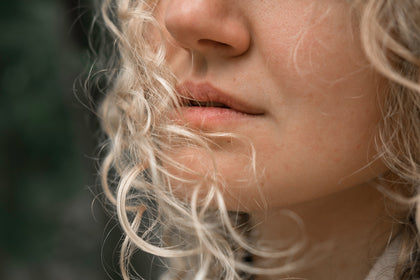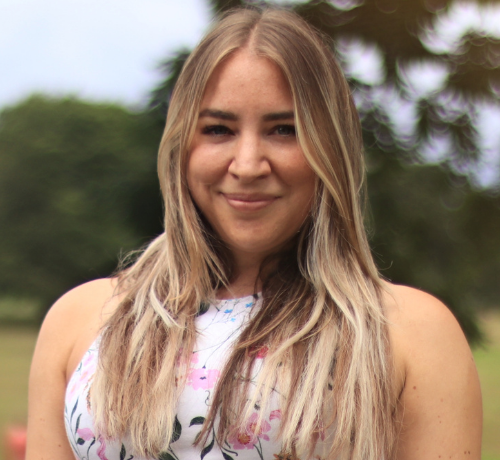If you've always believed hair density refers to hair thickness, you might be surprised that the two terms represent two entirely different things. To learn more, we consulted a dermatologist and dug into the research. Plus, discover what products you can use to help you increase the appearance of hair density and get thicker, fuller, longer hair.
What Is Hair Density?
Hair density refers to the number of hairs on your scalp per square inch. So, if you've ever heard someone say that they have fine hair but a lot of it, the amount is due to density.
Physician and medical director Dr. Samuel Hetz told VEGAMOUR, "Basically, density is the amount of hair per square inch of scalp. The average hair density is 100-200 hairs per square inch. That means that a person with high-density hair might have 300-400 hairs per square inch, while someone with low-density hair may have only 50-100 hairs per square inch."
On average, humans typically have between 80,000 to 120,000 hairs on their head at any time. Hair density is usually the highest around the crown of the head, but density can differ, often by ethnicity. Thankfully, hair density doesn't tend to indicate health, but those with nutritional deficiencies will often see a reduction in density.
"If you want to increase your hair's health, you need to have a balanced diet that provides all essential nutrients for healthy hair growth," said Hetz. "It's important to include foods rich in vitamin B-5, vitamin B-12 and fatty acids, like Omega-3, in your diet. Drinking lots of water will also help keep your scalp hydrated and prevent dryness, which can lead to breakage. Additionally, specialized supplements can help boost volume and help support your body's production of keratin and collagen, so the hair grows beautifully.
Hair density can also be related to race and age. A 2017 study compared the hair density of people of African and Caucasian descent to those of Hispanic descent. The study found that Caucasians natural hair had the highest hair density, while those of African descent had the lowest. Another study considers age in relation to hair density and found that the older you get, the more likely hair density will dip.
Further Reading: Endometriosis and Hair Loss: What You Need to Know
Types of Hair Density
The types of hair density can be generally categorized into three major types:
- Low hair density
- Medium hair density
- High hair density
As mentioned, hair thickness and density can be confused, but the two are distinctly different. You can have thin hair with high density or thick hair that's not dense at all. Medium hair density can also be referred to as having "normal" hair.
Hetz broke it down further:
"The first is low/fine hair density: This type of hair density has a thin and fine appearance," he said. "It requires more styling products than other types because it tends to fall flat quickly.
"Another type is normal/medium hair density: This type of hair density is normal for most people, but it can still vary from person to person. Hair having normal density tends to be neither thick nor thin and usually requires minimal styling products for styling purposes.
"The last major type is high/thick hair density: This type appears thick and full throughout its length, which means it has a lot of volume."
How to Determine Your Hair Density
Knowing your hair's density can help you better care for your strands. The most accurate way to measure is by counting the individual strands per hair follicle by 1-inch sections. Researchers often use an imaging technique called trichoscopy to achieve results this way because counting strands manually would be hugely impractical and time-consuming.
Hetz explained other clinical methods to measure hair density, "One is the phototrichogram, which is a test that uses a device to measure how much light is absorbed by each individual strand of hair," he said. "This is usually done in tandem with the second method, autotrichograms, which measure how much light reflects off each individual strand of hair."
If you're curious about your hair type and want to determine your hair density, you can try these at-home assessments.
The Ponytail Test
- Pull dry hair up into a ponytail and hold.
- Grab a piece of ribbon and loop it around the pony.
- Measure the circumference of the loop with a ruler.
- If it measures less than 2 inches, you likely have low-density hair. You're probably working with medium-density hair if the circumference is over 2 and up to 3 inches, whereas 4 inches and up indicates high-density hair.
The Scalp Test
- With dry hair, face a mirror and stand directly underneath an overhead light.
- Tilt your head until you see your scalp.
- If your scalp is obvious, you likely have low-density hair. If you barely see any of your scalp, you probably have either medium-density hair or high-density hair.
Also: Hair Shedding vs. Hair Loss: How to Tell the Difference
Care and Styling Tips for Different Types of Hair Density
Once you know the details of your hair's density, you can move forward and adjust your haircare routine accordingly.
Low-Density Hair
Those with thin hair will also often have straight hair that struggles to gain volume. Avoid heavy, oily products and opt for lightweight styling products. Heavy conditioners can add unwanted, excess weight, so make sure you use revitalizing formulas that complement your natural texture.
GRO Revitalizing Shampoo and Conditioner are formulated with powerful plant actives to encourage thicker, fuller looking hair and reduce shedding — all without weighing strands down.
Thickening products such as mousses and hair foams can help to add texture to low-density hair. Also, ask your hairstylist if a blunt cut could boost the appearance of your hair's thickness.
Medium-Density Hair
If you have medium-density hair, it generally requires less maintenance. Focus on nourishing your natural hair with hydration, and use a hair serum to keep growth consistent and healthy. Remember to tend to split ends with regular trims and keep processing and color changes to a minimum.
High-Density Hair
Those with thick strands and high-density hair may need to use heavier hair products to keep strands under control. Serums and oils can help reduce frizz, and hairstyles that remove bulk will work best. You might want to try some longer layers, or you could mix up your routine by straightening strands — just make sure you use a heat protectant to maintain integrity and condition.
See: 5 Tips for Healthy Hair Growth
Take a Holistic Approach to Hair Health
Whether you have thick strands sprouting from your hair follicles or thinner hairs that sometimes struggle to grow, accepting your hair's density can give you peace of mind. From gorgeous curly locks to whispy tendrils, learning to love your hair can make it easier to manage and a little more fun.
Talk to your hairstylist to freshen up your look with a flattering new cut. And also begin a holistic wellness routine that includes a nutritious diet and clinically proven products to encourage thicker, fuller and healthier looking hair.
#include-related-slider#
More From VEGAMOUR
- How to Get Shiny Hair, According to an Expert
- 6 Tips & Tricks for Styling Thin Hair
- Shea Whitney's Go-To VEGAMOUR Products
- 10 Beauty & Wellness Resolutions to Make This New Year
- 10 Ways to Add More Volume to Your Hair
Photo credit: Klaudia Ekert/Pexels
Back


















